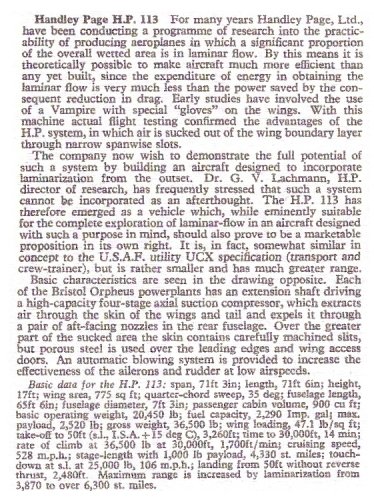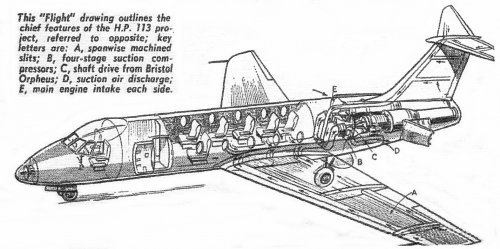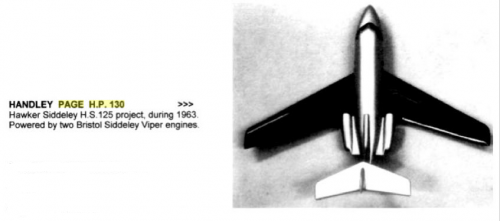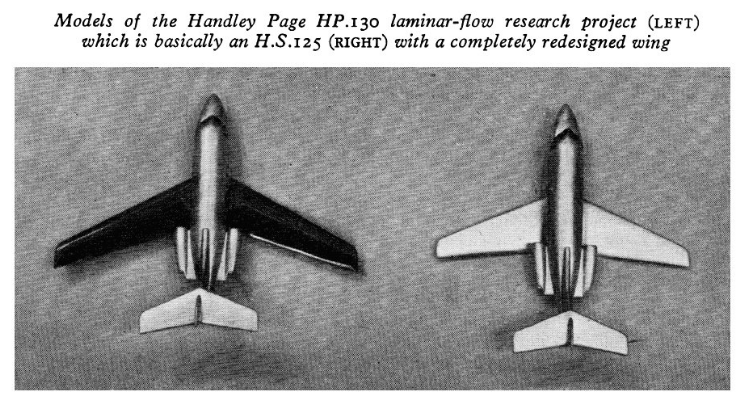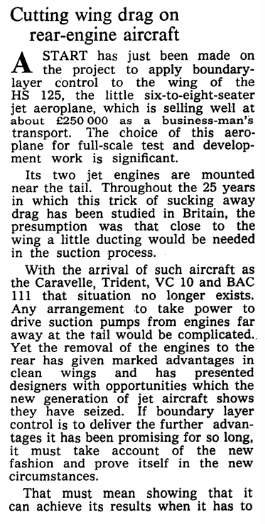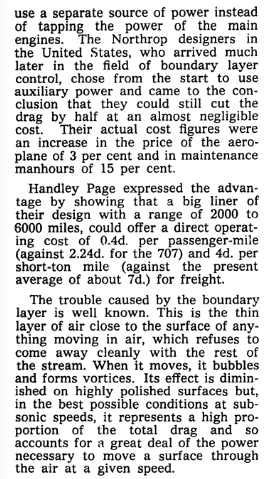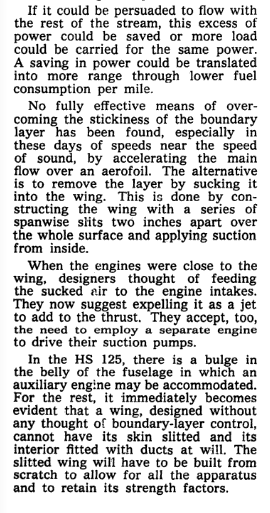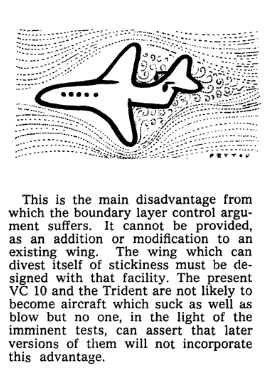Does anyone have any info on the proposed research version of the HS125?
http://www.flightglobal.com/pdfarchive/view/1964/1964%20-%202463.html
http://www.flightglobal.com/pdfarchive/view/1964/1964%20-%202463.html
Handley Page HP.130 Though yet only the subject of an MoA design study contract, this laminar transport conversion of the HS.125 is being designed as if the prototype order were inevitable, with the eventual hope that two might be ordered. Fuselage and engine installation of the HS.125 are unaltered, but a new, larger and slightly more swept wing is fitted, with spanwise sucking slits in upper and lower surfaces. Suction is to be provided by a small turbine housed in a Dominie-type blister ahead of the wing root, the exhaust being vented under the fuselage at approximately flight velocity. This last is an important aspect of the laminarization
process and increases propulsive efficiency. The problem of keeping the sucking slots clean in dusty surroundings remains to be resolved in practice; and sucking is not intended for use during the approach. The optimum size for a laminarized wing is greater than that for an equivalent normal wing, so that a lower CLmax is needed and lowspeed problems proportionately reduced.
Handley Page expect both civil and military interest in the HP.130, with Transport Command as possible experimenters in world-wide trials. Range increase over the standard HS.125 should be about 200 miles

